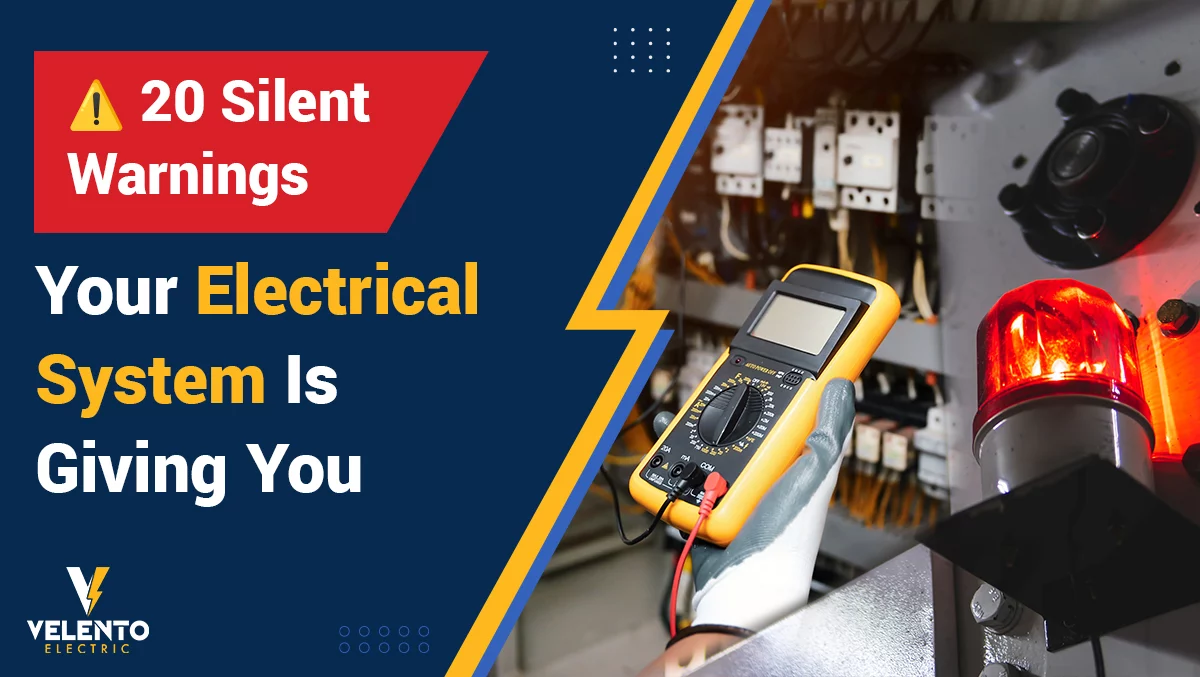💬 Introduction: Listening to the Hidden Voice of Your Home
Imagine for a moment that your home could talk — not through loud alarms or flashing sirens, but through small, almost imperceptible signs.
Your walls, your switches, your outlets — they whisper warnings long before disaster strikes.
The reality is, your electrical system is speaking every single day —
sending you critical signals that many homeowners fail to notice until it’s too late.
✅ Frayed wiring.
✅ Overloaded circuits.
✅ Failing panels.
✅ Hidden moisture intrusions.
Missing these silent warnings your electrical system is sending you can cost more than money —
it can cost the safety of your family, the value of your property, and your peace of mind.
In this comprehensive guide, you’ll learn how to recognize 20 crucial early signs your electrical system may be sending — and how timely action can save you from devastating outcomes.
Because when it comes to electricity, silence isn’t golden —
it’s a language you must learn to hear.
⚡ 1. Flickering Lights That Aren’t Caused by Bulb Issues
✅ What It Means:
- Loose wiring connections inside walls or fixtures disrupt the normal flow of current.
- Overloaded circuits struggling to handle modern power demands.
- A failing breaker that can no longer regulate surges.
✅ Deeper Risks Involved:
- Ignoring flickering can lead to overheating, melting insulation, and hidden electrical fires.
- Sensitive devices like smart TVs and computers can suffer irreversible damage.
✅ What You Should Do:
- First, swap the bulb. If flickering persists, suspect deeper issues.
- Minimize use of high-load appliances until circuits are checked.
- Schedule an urgent professional inspection.
🔔 Real World Scenario:
An elderly couple in New Jersey ignored kitchen light flickering for a year. A short circuit eventually ignited the drywall behind the cabinets — causing $50,000 in smoke and fire damages.
Minor flickers can end in major disasters.
🔥 2. Burning Smell Without a Visible Source
✅ What It Means:
- Hidden electrical arcing behind walls.
- Overheated wires or overloaded outlets.
- Degrading breaker panels nearing failure.
✅ Deeper Risks Involved:
- Electrical fires can smolder for hours unnoticed inside walls, only breaking out when it’s too late.
- Toxic smoke from burning insulation poses health risks even before flames appear.
✅ What You Should Do:
- Cut power immediately at the breaker box.
- Do not attempt DIY investigation.
- Call a licensed emergency electrician.
🔔 Remember:
A burning smell is your house’s version of screaming.
Ignoring it even for a few hours can be catastrophic.
🔌 3. Warm or Hot Outlets
✅ What It Means:
- Overloaded circuits heating up outlet contacts.
- Failing wiring insulation allowing heat to escape.
- Faulty or improperly installed outlets.
✅ Deeper Risks Involved:
- Heat accumulation accelerates degradation of wiring.
- Greatly increases fire ignition risks near furniture, curtains, and wood structures.
✅ What You Should Do:
- Unplug any connected devices immediately.
- Avoid using the outlet until professionally inspected.
- Check for discoloration or melting around plates.
🔔 True Story:
In a home office in Jersey City, an unnoticed warm outlet led to a fire during a weekend vacation. Returning homeowners found thousands of dollars of damage caused by a $20 outlet failure.
🛑 4. Frequently Tripping Circuit Breakers
✅ What It Means:
- Overloaded circuits from new appliances.
- Short circuits within wires.
- Breakers wearing out under stress.
✅ Deeper Risks Involved:
- Breakers tripping protects your system — but repeated trips signal urgent overload conditions.
✅ What You Should Do:
- Track what device or area causes trips.
- Avoid plugging multiple high-energy devices into one outlet.
- Have an electrician evaluate circuit loading and panel capacity.
🔔 Fact:
Your breaker is not “broken” — it’s trying to save your life.
🧩 5. Buzzing Sounds from Walls, Switches, or Outlets
✅ What It Means:
- Wires loosening and vibrating under current flow.
- Electrical arcs forming dangerous mini-sparks.
✅ Deeper Risks Involved:
- Electrical fires often begin silently with these micro-arcs behind closed walls.
- Buzzing switches may already have scorched internal components.
✅ What You Should Do:
- Shut off power to the circuit if buzzing persists.
- Schedule an immediate wiring inspection.
🔔 Warning:
Electricity should never “hum.”
Buzzing is danger disguised as music.
💥 6. Sparks When Plugging Devices In
✅ What It Means:
- Short circuits at plug points.
- Poor wire insulation inside outlets.
✅ Deeper Risks Involved:
- Escalation from tiny sparks to full arcing fire within seconds under load.
✅ What You Should Do:
- Replace affected outlets immediately.
- Use surge protectors where appropriate.
- Do not ignore repeated sparking — even tiny flashes.
🔔 Fun Fact:
Most house fires from outlets start in under three seconds after a spark.
🏚️ 7. Old Two-Prong Outlets Still in Use
✅ What It Means:
- Lack of proper electrical grounding.
- Systems that predate modern safety standards.
✅ Deeper Risks Involved:
- Dramatically higher risk of electrocution and appliance damage.
✅ What You Should Do:
- Upgrade all critical outlets to three-prong grounded systems.
- Evaluate full-home rewiring if multiple two-prong setups are present.
🔔 Pro Tip:
Grounding saves devices — and lives.
Don’t trust ancient wiring with your modern life.
🧯 8. Circuit Breakers Feel Hot to the Touch
✅ What It Means:
- Undersized breakers under heavy load.
- Internal panel stress and aging.
✅ Deeper Risks Involved:
- Overheated panels can ignite fires inside breaker boxes, often unnoticed for hours.
✅ What You Should Do:
- Turn off power and avoid using additional appliances.
- Request thermal imaging analysis from your electrician.
🔔 Reminder:
Your breaker box is not supposed to radiate heat —
that’s a flashing red warning light.
🚪 9. Outlets or Switches Loose in the Wall
✅ What It Means:
- Mounting hardware wear and tear.
- Wires bending dangerously inside walls.
✅ Deeper Risks Involved:
- Loose switches stress the wiring, creating spark risks.
✅ What You Should Do:
- Tighten fittings or replace unstable outlets/switches.
- Check internal wiring during repairs.
🔔 Small shakes today lead to big shocks tomorrow.
🌧️ 10. Water or Moisture Near Outlets or Panels
✅ What It Means:
- Hidden roof leaks or pipe bursts seeping moisture into electrical systems.
- Condensation forming inside outdoor panels or improperly sealed outlets.
✅ Deeper Risks Involved:
- Water intrusion significantly increases electrocution risks.
- It can silently corrode wiring over time, leading to spontaneous shorts and electrical fires.
✅ What You Should Do:
- Immediately shut off power to the affected circuit.
- Dry the area carefully without touching the outlet directly.
- Call both a qualified plumber and licensed electrician to fix sources and repair systems.
🔔 Important:
Moisture and electricity never belong together.
If you see wet outlets, act immediately — lives are at stake.
🔄 11. Lights Dimming When Appliances Turn On
✅ What It Means:
- Inadequate circuit capacity for modern appliance loads.
- Main service panel struggling to distribute power effectively.
✅ Deeper Risks Involved:
- Long-term strain on wiring causes insulation breakdown and potential fires.
- Major appliances risk internal damage due to inconsistent voltage supply.
✅ What You Should Do:
- Avoid operating heavy appliances simultaneously on the same circuit.
- Schedule a service panel evaluation — you may need an upgrade.
🔔 Reality Check:
Your microwave shouldn’t hold your living room lighting hostage.
Dimming lights are electrical cries for help.
📈 12. Increase in Your Electric Bill Without Reason
✅ What It Means:
- Electrical leaks from failing insulation.
- Aging appliances drawing excessive phantom power.
- Overstressed circuits wasting energy.
✅ Deeper Risks Involved:
- Besides financial drain, high energy usage can overheat your wiring system without visible symptoms.
✅ What You Should Do:
- Request a professional energy audit.
- Upgrade to energy-efficient appliances.
- Inspect wiring for hidden faults.
🔔 Your electric bill could be your wallet’s way of hearing the whispers your wires are making.
🧲 13. Static Shocks from Appliances or Surfaces
✅ What It Means:
- Improper grounding or bonding of systems.
- Environmental static amplified by dry air conditions.
✅ Deeper Risks Involved:
- Minor now, but improper grounding risks catastrophic surges during lightning storms or faults.
✅ What You Should Do:
- Verify appliance grounding connections.
- Install grounding rods or systems if necessary.
🔔 Static isn’t harmless in an electric world — grounding keeps you safe.
🖥️ 14. Electronic Devices Frequently Malfunction or Reset
✅ What It Means:
- Voltage fluctuations caused by unstable circuits.
- Dirty power delivery damaging sensitive electronics.
✅ Deeper Risks Involved:
- Premature failure of expensive electronics (TVs, servers, gaming consoles).
✅ What You Should Do:
- Install dedicated circuits or whole-home surge protection.
- Upgrade old wiring to stabilize current flow.
🔔 If your laptop seems “possessed,” check your walls — not your Wi-Fi.
🏚️ 15. Aged Electrical Panel (Over 25 Years Old)
✅ What It Means:
- Panels installed decades ago weren’t designed for today’s load demands.
- Components inside may be rusting, degrading, or failing silently.
✅ Deeper Risks Involved:
- Overloaded, outdated panels are among the top causes of house fires from electrical failure.
✅ What You Should Do:
- Replace panels older than 25 years with modern, safe systems.
- Consider adding smart load monitoring panels for better energy management.
🔔 If your panel is older than your oldest child — it’s time for retirement talks.
🛡️ 16. No GFCI Protection in Bathrooms, Kitchens, or Outdoor Areas
✅ What It Means:
- Missing life-saving ground-fault interrupters where water meets electricity.
✅ Deeper Risks Involved:
- Even minor water contact can cause fatal electric shock in unprotected outlets.
✅ What You Should Do:
- Upgrade high-risk zones with GFCI outlets today.
- Test all GFCI outlets monthly using the built-in test button.
🔔 In wet zones, GFCI isn’t optional — it’s the best bodyguard your family has.
🚫 17. Switches or Outlets That Don’t Work
✅ What It Means:
- Broken internal switches or degraded wiring.
- Disconnected or damaged circuits behind the walls.
✅ Deeper Risks Involved:
- Inoperative outlets may conceal severe wiring faults about to ignite.
✅ What You Should Do:
- Test devices in multiple outlets to confirm if it’s the outlet or device.
- Arrange professional inspection of non-working outlets.
🔔 Dead outlets are dead serious — don’t shrug them off.
🛎️ 18. Strange Shadows or Black Marks on Outlets
✅ What It Means:
- Micro-arcs or previous mini fires leaving scorch marks.
- Heat damage from loose prongs or faulty devices.
✅ Deeper Risks Involved:
- Arc faults are the #1 silent cause of hidden wall fires nationwide.
✅ What You Should Do:
- Replace affected outlets immediately.
- Inspect nearby wiring for collateral damage.
🔔 If your outlet survived a tiny fire already, don’t test its luck again.
🌪️ 19. Noisy, Humming Electrical Panels
✅ What It Means:
- Panels struggling under excessive load or outdated transformers.
- Loose connections causing current vibrations.
✅ Deeper Risks Involved:
- Humming escalates into heat buildup, cracking breakers, and full short-circuits.
✅ What You Should Do:
- Have the panel professionally evaluated.
- Balance high-load circuits to reduce strain.
🔔 Panels should work in silent dignity — not buzz like angry bees.
🏚️ 20. You Can’t Remember the Last Time You Had an Electrical Inspection
✅ What It Means:
- Years of unnoticed wear and tear, unseen wiring degradation, invisible code violations.
✅ Deeper Risks Involved:
- Electrical systems degrade with time, even without visible problems.
✅ What You Should Do:
- Schedule a full-home electrical inspection immediately if it’s been over 5 years.
- Get panels, wiring, outlets, and grounding checked comprehensively.
🔔 Homes need checkups just like bodies — don’t delay yours.
💡 Final Thoughts: Small Whispers, Big Consequences
When it comes to electricity, your home is never truly silent.
It hums, flickers, buzzes, warms — sending you signs that trouble may be brewing beneath the surface.
Ignoring the silent warnings your electrical system is sending you isn’t just risky —
it’s playing with hidden fire.
✅ Pay attention to the little things: a flicker, a buzz, a smell.
✅ Act fast when the first signs appear.
✅ Invest in professional inspections and repairs before minor issues turn catastrophic.
Because a well-maintained electrical system doesn’t just power your lights —
it powers your safety, your family, and your future.
📣 Call to Action:
Noticed any of these silent warnings at home?
⚡ Don’t wait until it’s too late! Schedule a full electrical safety inspection with Velento Electric today!
Protect your loved ones, your investment, and your peace of mind — because your house deserves to be heard.
📞 When your home speaks, Velento Electric listens — and protects.












